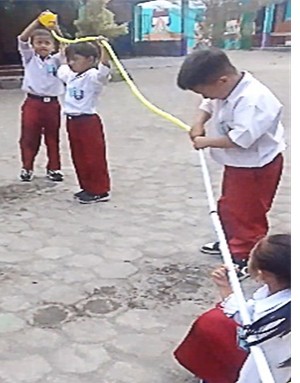A Design of integrated STEM constructive games for developing the Four Cs in early elementary students
DOI:
https://doi.org/10.17083/3bcwrq59Keywords:
Game design, Constructive game, STEM, The Four Cs, Early elementary studentsAbstract
The science, technology, engineering, and mathematics (STEM) approach has proven reliable in developing critical thinking, collaboration, communication, and creativity skills (the Four Cs). However, research on implementing the STEM approach in the context of early elementary school student development remains limited. To address this gap, this research integrates the STEM approach with constructive play, referred to as the iSTEM-C Game. The game was developed using the mechanics, dynamics, and aesthetics (MDA) framework. This study aims to explore two questions: How do students perform on the Four Cs during the implementation of the iSTEM-C Game, and why is the iSTEM-C Game effective in boosting Four Cs performance? The research employed a qualitative case study approach, involving 98 students from four elementary schools in Sleman Regency, Yogyakarta. Participants were selected through purposive sampling based on saturation mechanisms. Data collection was conducted using video recordings, field notes, and a 30-item structured observation sheet. The pattern matching technique was used to compare empirical findings with expected patterns during data analysis. The research findings indicate that the iSTEM-C game mechanism is key to promoting Four Cs performance through three critical elements: diverse tools presented before discussion, rules integrated with real-world problems, and cognitively tailored challenges. The novelty of this research lies in a practical pedagogical framework that facilitates game-integrated STEM implementation, tailored to the concrete operational cognitive stage, to promote the development of the Four Cs through three game stages: planning, try and retry, and show-play.

Downloads
Published
Issue
Section
License
Copyright (c) 2025 Meta Br Ginting, Yoppy Wahyu Purnomo, Haryanto

This work is licensed under a Creative Commons Attribution-NonCommercial-NoDerivatives 4.0 International License.
IJSG copyright information is provided here.